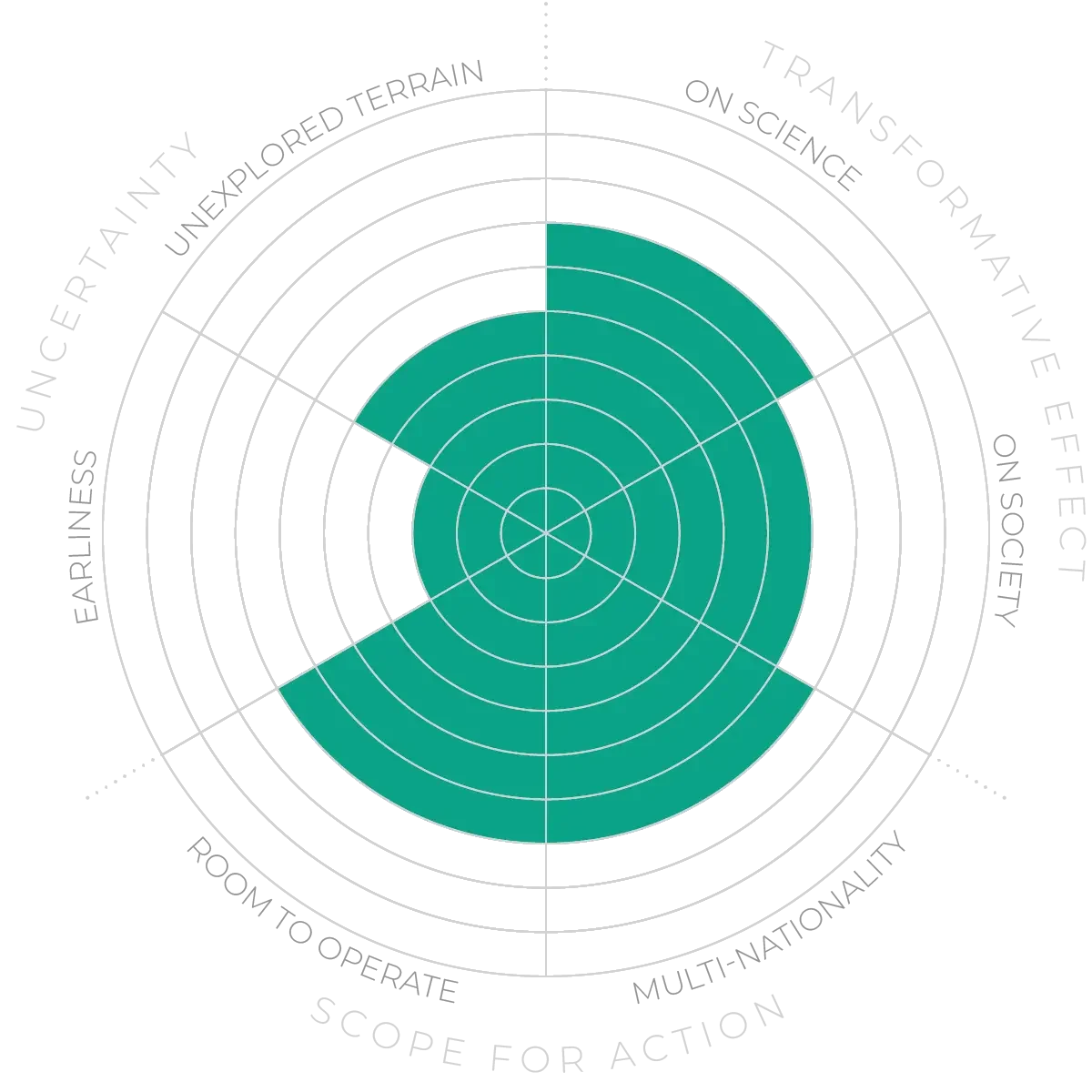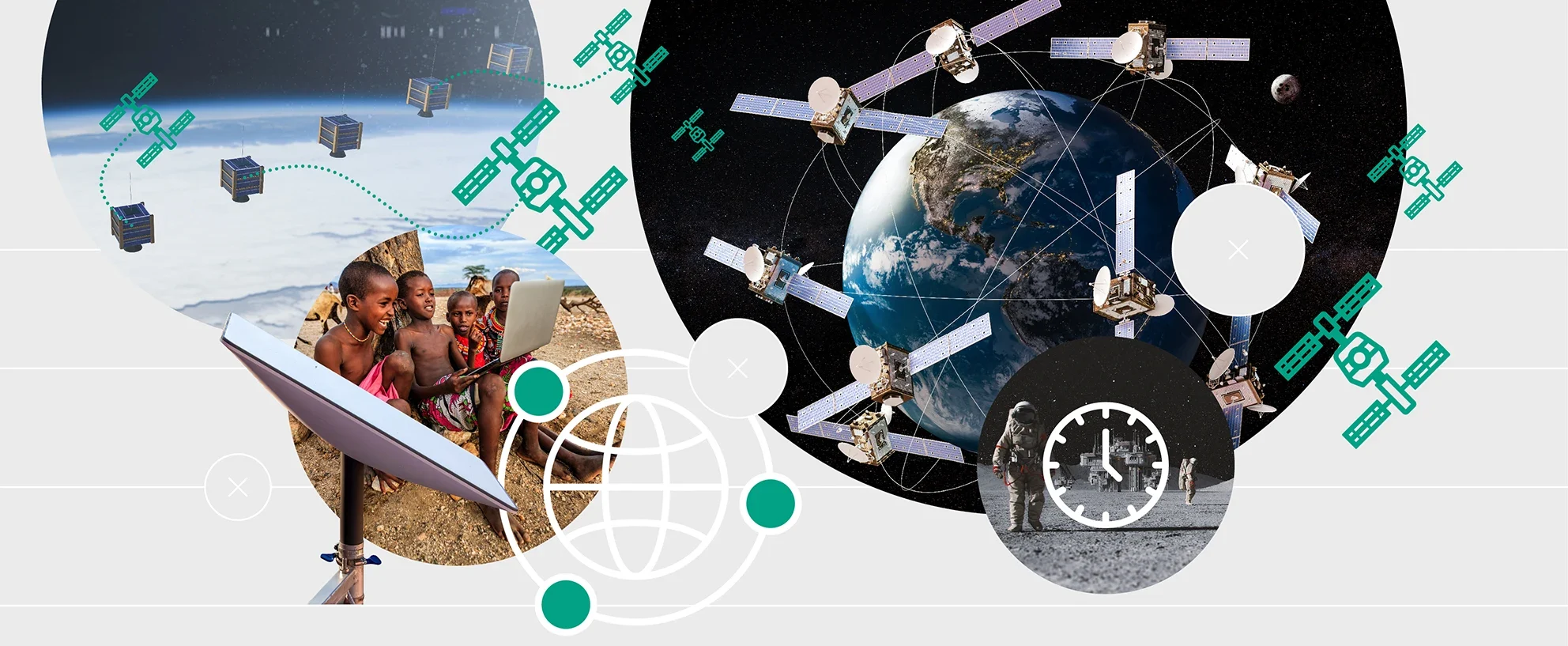Future Horizons:
10-yearhorizon
Satellite operations have geo-political impact
25-yearhorizon
Improved satellite manoeuvrability
These fleets will quickly become more capable as companies deploy satellite-to-satellite encrypted laser communications. Real-time video feeds from space are also gaining in popularity.12
With launch costs dropping, satellite operators are experimenting with off-the-self components for imaging, sensing and communicating at lower cost.
One important limit on satellite lifetime is the amount of onboard fuel. With high-end satellites costing hundreds of millions, refuelling is an attractive way to extend lifetimes. Lockheed Martin13 and Northrop Grumman14 are among companies developing a standard refuelling capability for satellites. Orbit Fab has already tested liquid pumping technology aboard the International Space Station and plans to offer satellite-refuelling services in 2025.15 This will require greater manoeuvrability: changing orbits and rendezvousing with other craft remains difficult, requiring plentiful fuel and agile propulsion systems.16
However, the US, Russia and China are perfecting this technique in spacecraft that can approach and inspect other vehicles.17 This, is already enabling applications such as automated refuelling of spacecraft and dramatic increases in operational lifetimes. It also raises security concerns, as close approaches in orbit enable the disruption or even disabling of civil and military satellites.
The increased activity on the Moon and in lunar orbit will require a lunar time zone with satellites proving timing, positioning and communications. That will require significant collaboration to develop international standards
Satellite innovation - Anticipation Scores



